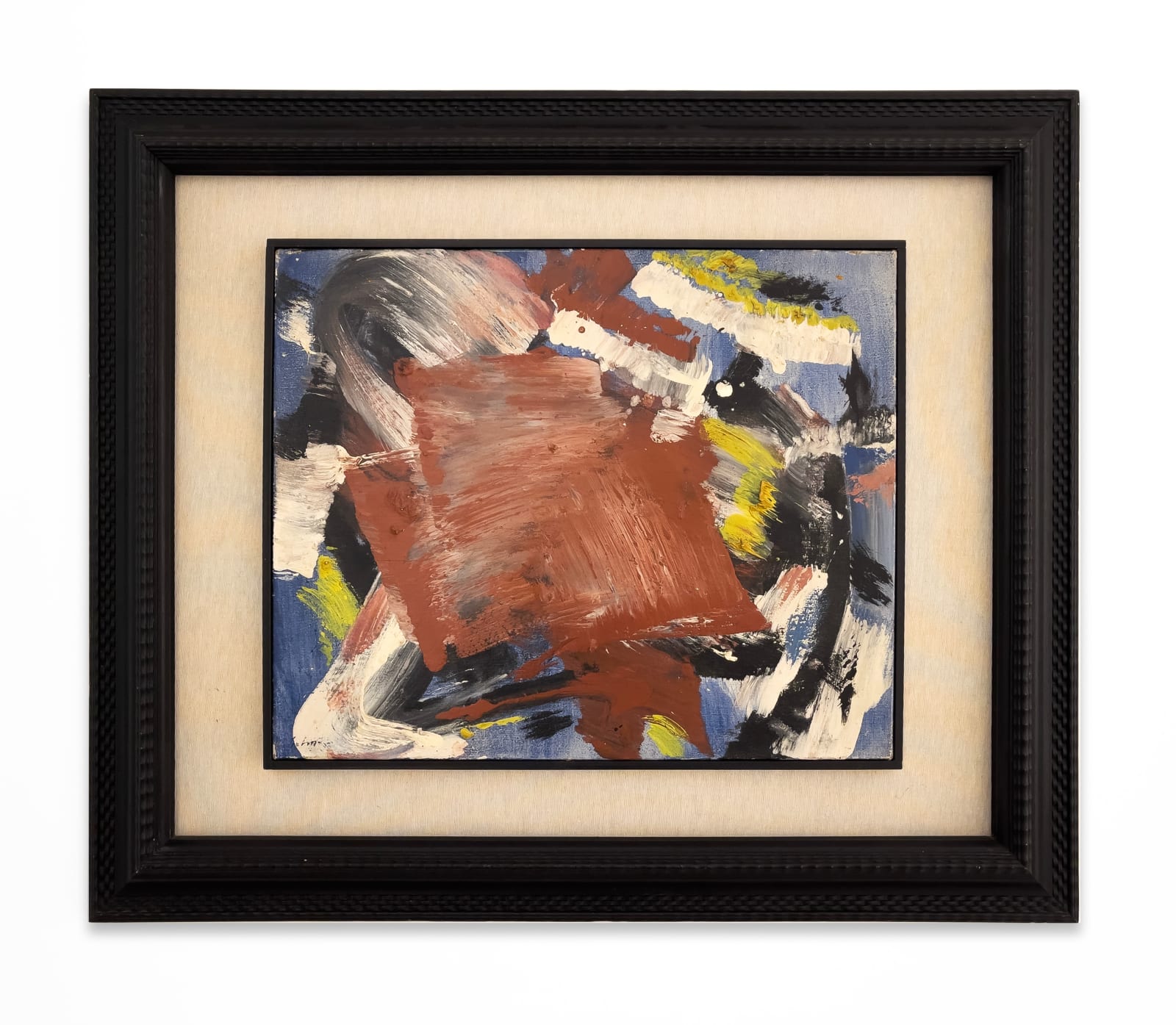
Gérard Schneider Switzerland, 1896-1986
19 3/4 x 24 in
Framing dimensions: 83.5 x 99.5 x 5.5 cm
Gérard Schneider was born in Switzerland in 1896. At 20 he relocated to Paris where he studied at the École Nationale des Arts Décoratifs, and later at the École Nationale des Beaux-Arts in the studio of the painter Fernand Cormon, teacher to van Gogh and Toulouse-Lautrec. During his time in Paris, Schneider frequented musical circles which informed his early works, featuring a movement-based expression. He was exposed to the likes of Picasso and Kandinsky who had famously departed from reality in their work. It was just at the cusp of the war that Schneider would enter a new phase of his career, venturing into what is now called Lyrical Abstraction. Along with artists such as Hans Hartung and Pierre Soulages, the lyrical abstractionists took art to another dimension, their art being unwary, animated modes of communication. This takes center stage in Schneider’s works and would characterize his oeuvre as we know it today. The later 1940s saw an abundance of expositions between Europe and the United States where he landed exclusive representation at Sam Koontz Gallery in New York. This was followed by a series of institutional acquisitions at the MoMA and the Phillips Collection. A landmark retrospective exhibition was famously held in Brussels in 1953 at the Musée d’Art Moderne showcasing the progression of his style which became more liberated in the post-war period. In the 1960s, Schneider’s work gained a wilder expressionist quality, utilizing brighter colors. The French pavilion at the 1966 edition of the Venice Biennale featured a solo exhibition of these “free” works. Today Schneider’s work can be found in the world’s most prestigious collections, including the Musée d’Art Moderne, Brussels, the MoMA, New York, Galleria d’Arte Moderna, Rome, the Centre Pompidou, Paris, Museu de Arte Moderna do Rio de Janeiro, Rio de Janeiro and the Montréal Museum of Fine Arts, Québec, among many others, and has been featured at Documenta twice. Schneider died in 1986 in Paris.